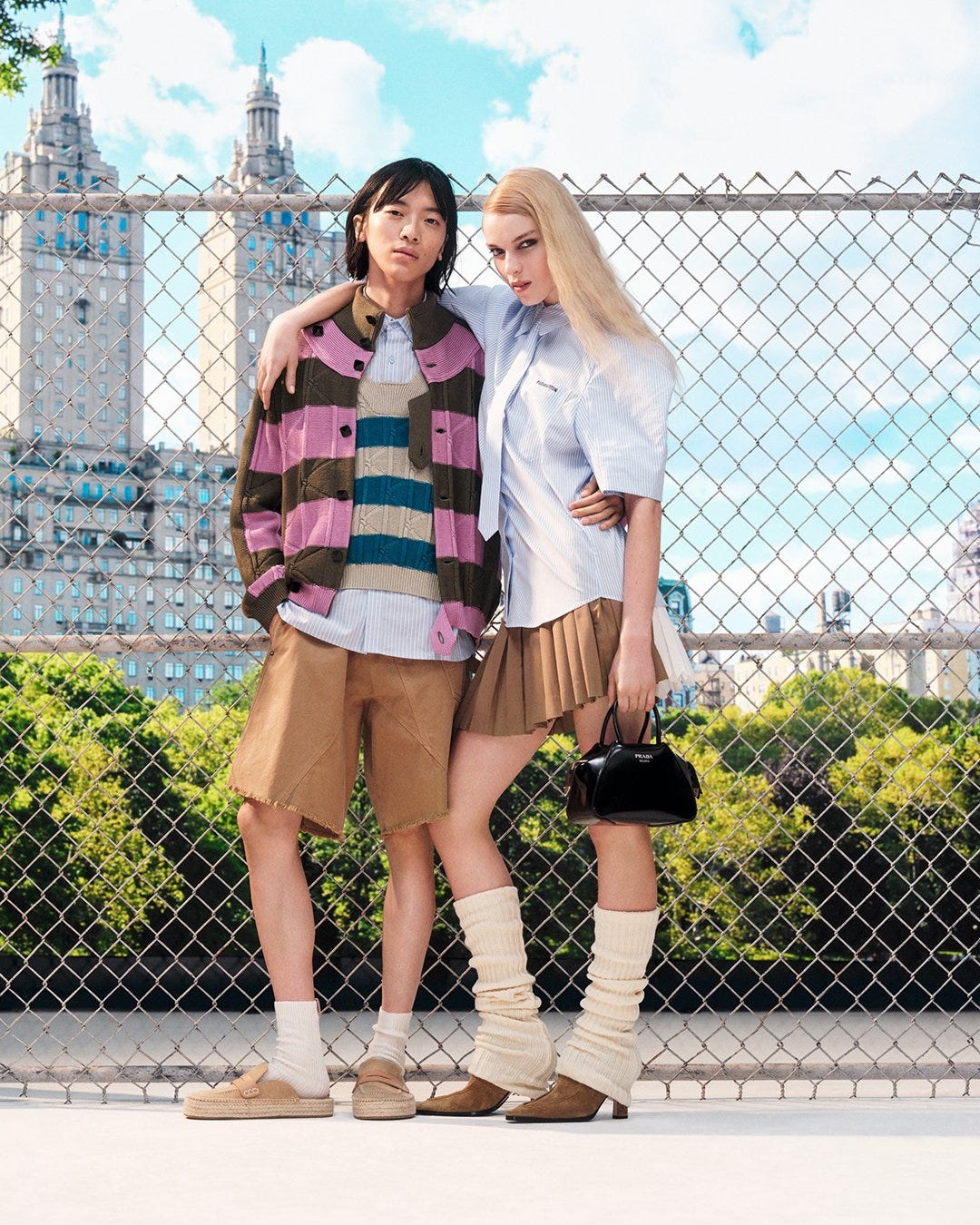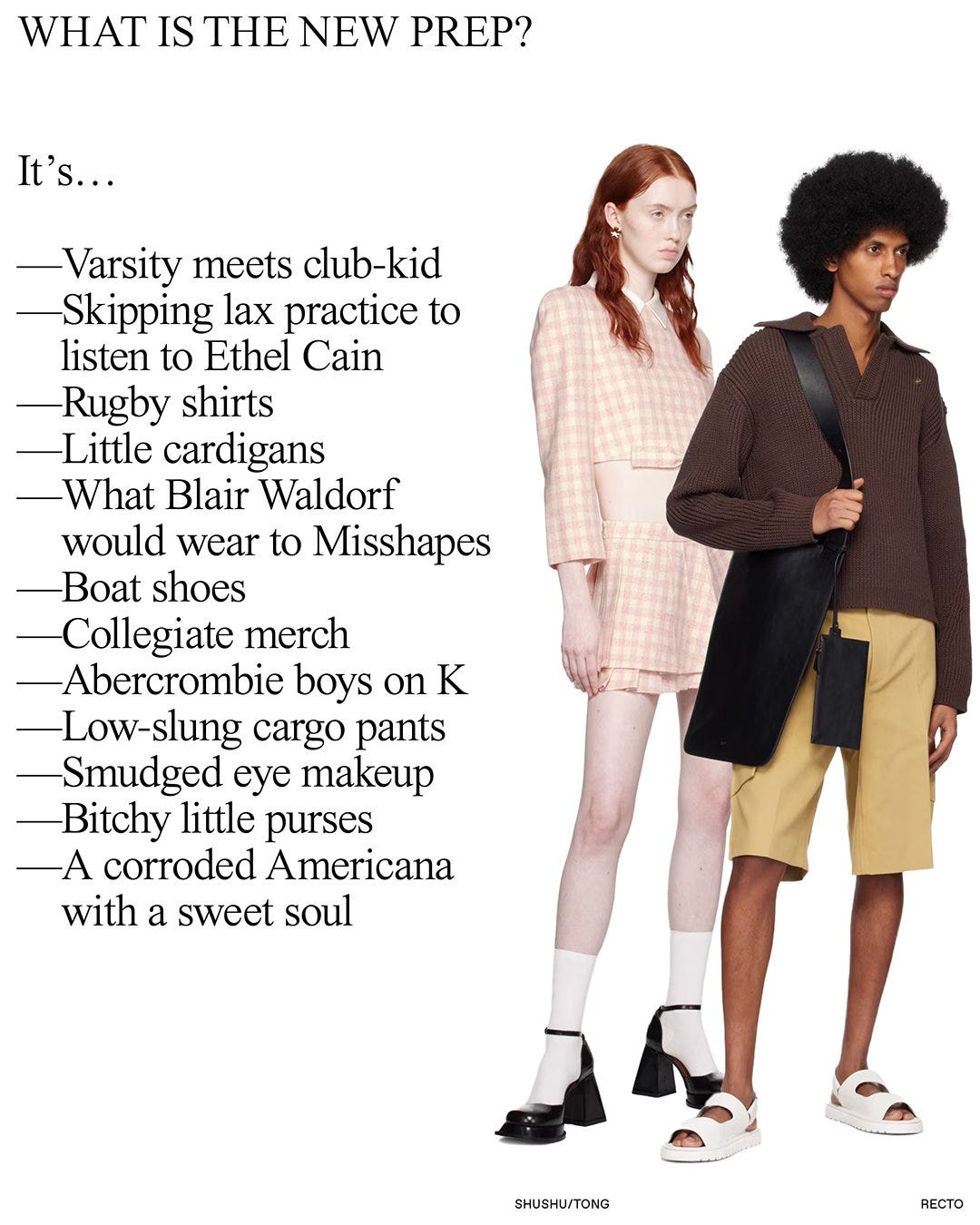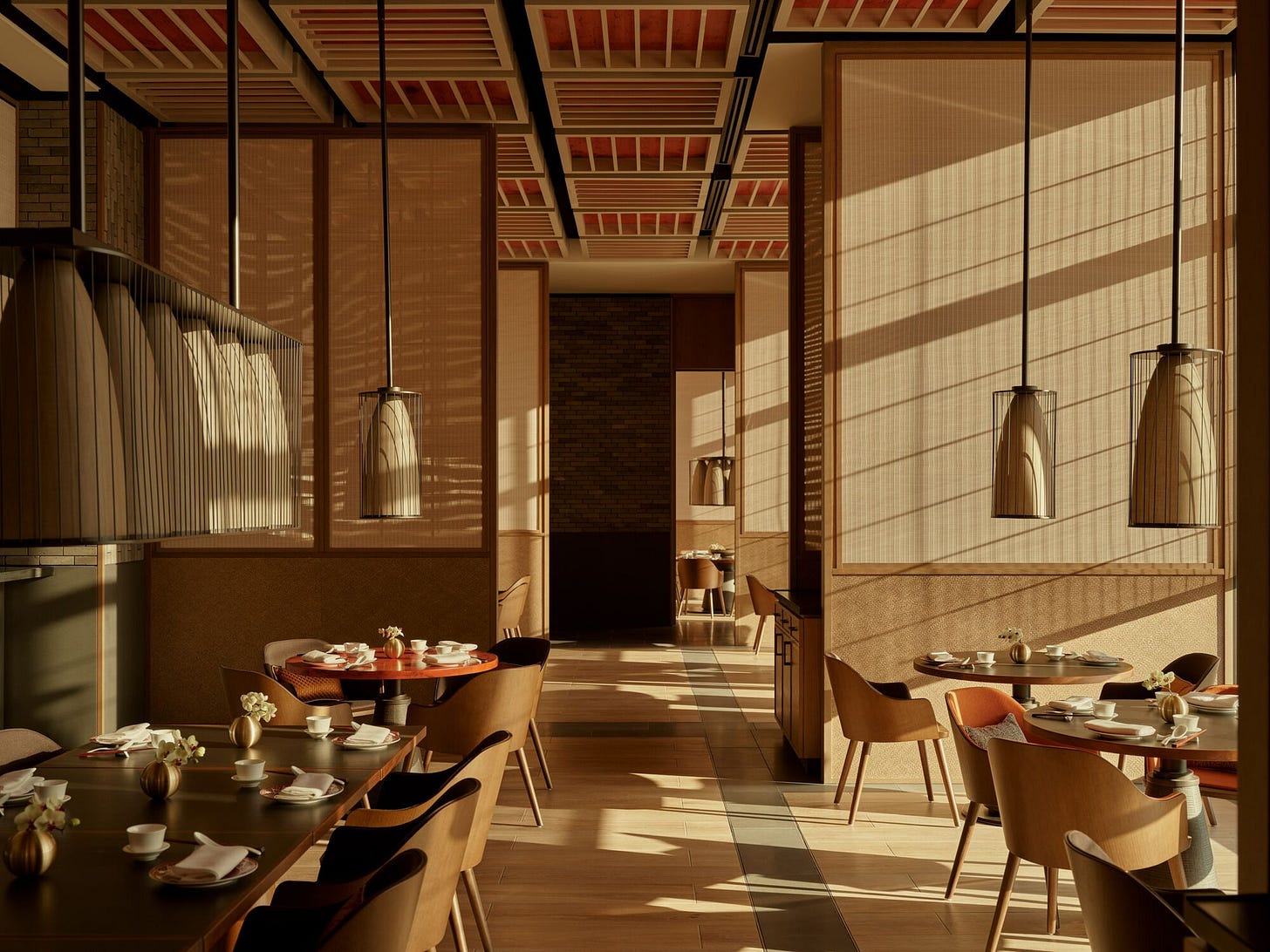The World's Most Luxurious Hotel is Launching a Cheaper Room
Insights on marketing, business, branding, products, design, founders, and culture.
GM everyone.
This is ‘Who Do You Know’ subway edition aka I am going home and typing this on my phone.
We make it happen any way we can.
Here is some news that’s fascinating me:
News
SSENSE says preppy is back! The fashion retailer’s meta trend report website is superb, presented as a live group chat between style editors on what tends they are seeing out in the wild and who is wearing them. It’s filled with musings on the comeback of Chelsea boots, Our Legacy denim, what people are wearing at Top Golf (LOL), and the emergence of a new king of prep-wear.
Think ‘varsity meets club kid’. In practice this is rugby polos, tiny cardigans, collegiate merch, mixed with cargos, thick soled loafers or boots, and f*cked up vintage Abercrombie. This is what you wear for a spring Central Park walk before going out all night at Basement. If I can think of one brand really going in on this aesthetic it’s Raimundo Langois. It’s like mid-00s Abercrombie but way hornier.
Oh and of course they gave it the classic SSENSE meme treatment—
Aman is launching a more affordable hotel chain. The mind’s behind the world’s most luxurious hotel chain have introduced Janu, a more accessible version of the hotels which can cost upwards of $3,000/ per night. The new hotel line seeks to one up other ‘lifestyle hotels’ (the Edition, Equinox Hotels) bringing the Aman experience to a new consumer demo: younger, nouveau riche, tech enthused, and seeking nightlife. We’ve seen this playbook for luxury brands before. The key is to offer a more accessible extension of the brand to get consumers with less capital on the hook. For example, the ‘young with expendable income’ consumer will splurge smaller luxuries like an Hermes scarf, which doesn’t bring in a lot of revenue for Hermes, but does begin building customer loyalty and starts the purchase journey to an Hermes bag. Janu is Aman’s entry offering, tailored for this niche demo, while being separate from the Aman brand to avoid diluting its reputation for extreme luxury.
This company is offering a chicer way to store your things. Cliik is a ‘creative storage company’ offering cleverly designed, magnetic containers to store food, accessories, supplies, and more. The wordmark is the best I’ve seen all year, and the brand’s art direction on social is incredibly well done. It strikes at the intersection of nostalgic advertising and new consumer brand strategy.
Sharing your work is almost as important as making it. There’s an interview clip featuring Tyler, the Creator going viral on my timeline right now. In the clip he espouses he observes how many creators spend so much time and energy creating music, writing, photography, cinema, etc. and will go on to share it once on their Instagram story. The reality is that anything you spend time working on should be screamed into the world at full volume. Think about your rollout, and frame your creative endeavors as a product, and people’s attention as the currency. I’ve talked to tons of designers who say that they didn’t see any clients until they started posting their work on social media. Its something we can all be better at. But if you’re making anything, post it, and chances are the more times you do this, the higher the likelihood of the right people seeing it, and giving you an opportunity, or even better… money!
Who Do You Know? is a daily newsletter covering marketing, business, branding, products, design, founders, and culture.
Its written by Jake Bell, a content marketing and brand strategist in NYC.
To get in touch visit www.jb.studio or email jake@jb.studio










